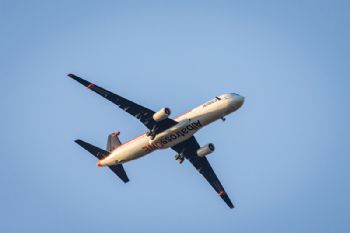
Airbus engineers have developed a scale-model aeroplane with the first in-flight flapping wing-tips. The company has drawn on nature to develop its ‘semi-aeroelastic hinge’ concept to reduce drag and overall wing weight, while combatting the effects of turbulence and wind gusts.
Known as AlbatrossOne, the remote-controlled aircraft has already taken its first flights to prove the concept; the team will now conduct further testing before the demonstrator (based on the Airbus A321) is scaled up further.
Airbus engineer Tom Wilson, based at Filton (
www.airbus.com), said: “While hinged wing-tips are not new — military jets use them to increase the storage capacity of aircraft carriers — the Airbus demonstrator is the first aircraft to trial in-flight freely flapping wing-tips to relieve the effects of wind gusts and turbulence.
"We drew inspiration from nature; the albatross locks its wings at the shoulder for long-distance soaring but unlocks them when wind-gusts occur or manoeuvring is required.
"The AlbatrossOne will explore the benefits of unlockable freely flapping wing-tips— accounting for a up to a third of the length of the wing — that react autonomously to turbulence and lessen the load on the wing at its base, thereby reducing the need for heavily reinforced wing boxes.”
The AlbatrossOne has been constructed from carbon fibre and glass fibre-reinforced polymers, as well as 3-D printed components.
The initial tests examined its stability with the wing-tips locked and completely unlocked, according to Filton engineer James Kirk.
“The next step is to conduct further tests to combine the two modes, allowing the wing-tips to unlock during flight and to examine the transition.”
The team presented their research at the
International Forum on Aeroelasticity and Structural Dynamics conference in the USA last month.